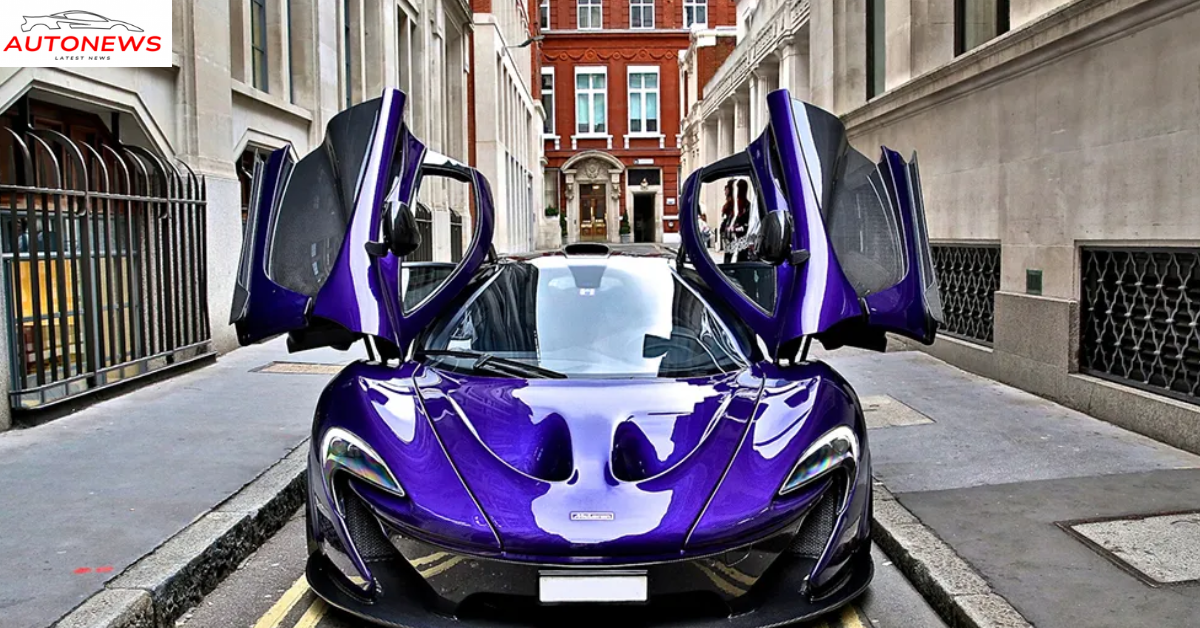When the McLaren P1 was unveiled at the 2012 Paris Motor Show, it didn’t just make headlines—it shifted paradigms. As one of the first true hybrid hypercars, the P1 showcased how electric power could be more than just environmentally conscious; it could be brutally fast. Blending F1-inspired technology, futuristic design, and raw performance, the P1 was McLaren’s answer to the evolving demands of high-performance automotive engineering. More than a car, it became a statement: that the future of speed had arrived.
A Legacy of Innovation
McLaren, with its deep roots in Formula 1, has always been synonymous with precision engineering and innovation. The P1 was designed as a spiritual successor to the legendary McLaren F1, a car that held the title of the world’s fastest production car for years. But instead of chasing top speed records, McLaren focused on one central idea: to create the best driver’s car on road and track alike.
The result was a limited-run masterpiece—only 375 units were built between 2013 and 2015. With a price tag of over $1 million at launch, it was aimed at collectors, enthusiasts, and those with a deep appreciation for automotive artistry.
Powertrain: Hybrid Without Compromise
At the heart of the McLaren P1 lies a remarkable hybrid powertrain. It combines a 3.8-liter twin-turbocharged V8 petrol engine with an electric motor to produce a staggering 903 horsepower and 900 Nm of torque. The electric motor alone provides 177 horsepower, giving the P1 both instant torque and an emissions-free mode for short-range driving.
This power is channeled through a 7-speed dual-clutch transmission, propelling the P1 from 0 to 60 mph in just 2.7 seconds. It hits 124 mph (200 km/h) in under 7 seconds and 186 mph (300 km/h) in under 17 seconds. Top speed? Electronically limited to 217 mph (350 km/h).
Yet, raw figures only tell part of the story. What makes the P1 truly exceptional is how it delivers this power. The hybrid system isn’t there just for efficiency—it actively enhances performance. The electric motor fills in torque gaps during turbo spool-up, providing seamless acceleration with minimal lag.
Aerodynamics and Design
The McLaren P1’s design isn’t just aggressive—it’s functional. Every curve, vent, and angle has been sculpted with aerodynamics in mind. The car features an active rear wing that adjusts depending on speed and driving mode, delivering up to 600 kg of downforce at high speed. The front and rear diffusers, along with adjustable ride height and dynamic suspension, ensure the P1 stays glued to the road or track.
From a visual standpoint, the P1 is futuristic yet unmistakably McLaren. With its teardrop cabin shape, dihedral doors, and sculpted bodywork, it exudes speed even when parked. Carbon fiber is used extensively to keep weight down, with the monocoque chassis weighing just 90 kg.
Interior: Driver-Centric Minimalism
Step inside the McLaren P1, and you’re greeted with a cockpit that is minimalist but purposeful. The focus here is the driving experience. Lightweight bucket seats, a digital instrument cluster, and a simple center console underscore McLaren’s philosophy: nothing unnecessary.
Despite its performance-first ethos, the P1 doesn’t skimp on technology. It offers a touchscreen infotainment system, climate control, and even a rearview camera—though you won’t find luxury trim materials or excessive sound insulation. After all, the engine note is part of the experience.
Track-Ready Technology
The P1’s advanced electronics are derived from McLaren’s Formula 1 program. Its IPAS (Instant Power Assist System) deploys electric power on demand, while the DRS (Drag Reduction System) reduces aerodynamic drag for higher straight-line speed. Combined with adaptive dampers and active aerodynamics, the P1 feels at home lapping a circuit as much as cruising a coastal road.
In fact, McLaren claimed that the P1 could lap many tracks faster than most race cars while still being fully street legal.
A Legacy That Endures
The McLaren P1 was more than just a product of its time—it was a harbinger of the hybrid revolution in high-performance cars. Alongside contemporaries like the Porsche 918 Spyder and Ferrari LaFerrari, it formed the “Holy Trinity” of hypercars that proved electrification didn’t mean compromise.
Today, the P1 stands as a collector’s gem and a technological marvel. While McLaren has since introduced newer models and advanced hybrid systems, the P1 remains iconic—a reminder that the pursuit of driving perfection sometimes requires breaking all the rules.

